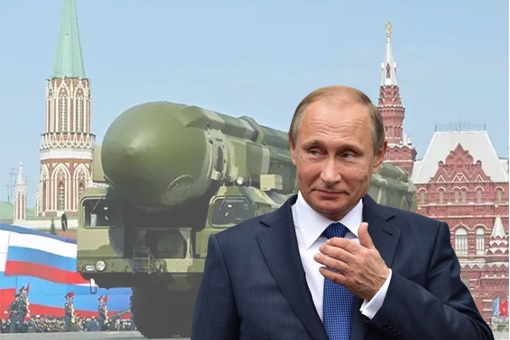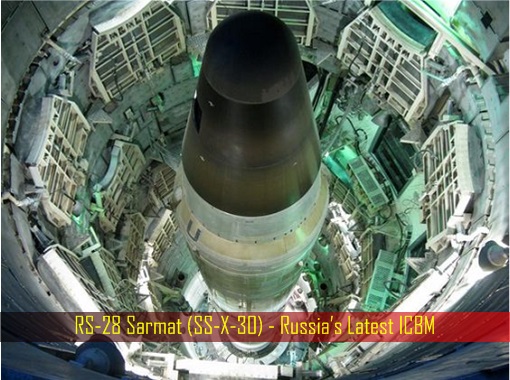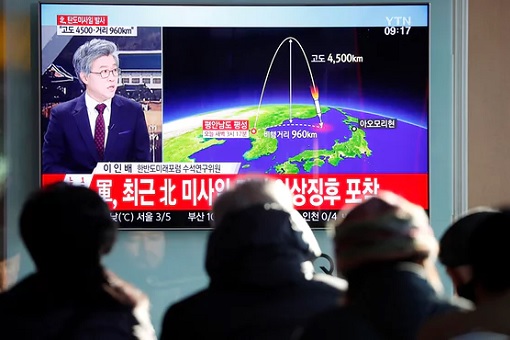Kim Jong-un had bragged that nuclear button is always on his desk, suggesting that as the dictator of North Korea, he could launch nuclear missile faster than Donald Trump. Not to be outdone, Trump retaliated and boasted that he too has a nuclear button – only bigger and more powerful. In reality, of course, the U.S. president doesn’t actually have a physical button.
Unlike the rogue state of North Korea, the process for launching a nuclear strike by the President of the United States is secret – and complex – and involves the use of a nuclear “football,” which is carried by a rotating group of military officers everywhere the president goes and is equipped with communication tools and a book with prepared war plans.
To prevent an accidental nuclear war, Trump is required to identify himself to military officials at the Pentagon with codes unique to him. Those codes are recorded on a card known as the “biscuit” that is carried by the president at all times. He would then transmit the launch order to the Pentagon and Strategic Command. Still, General John Hyten said U.S. military could resist Trump’s order.

While Mr. Kim and Mr. Trump were busy boasting and bragging who has the bigger nuclear button, they have forgotten that another person has the biggest button of all. And he has quietly tested not one, not two but 80 new ICBMs (Intercontinental Ballistic Missile) in the last 5 years (2012 – 2017) – averaging 16 missiles every year.
Russian President Vladimir Putin has been modernizing its ICBM arsenal but the U.S. hadn’t raised any criticism at all. Russia’s Strategic Missile Force (SMF) Chief of Staff Lieutenant-General Alexander Ponomarenko confirmed in late December 2017 that Kremlin inducted 80 new Topol-MR intercontinental ballistic missiles (ICBM) into service over the period.
The Topol-MR, first introduced in 2010, is an improved variant of the Topol-M, a 3-stage solid fuelled ICBM with an estimated range of over 11,000 kilometres (6,835 miles). Also known as RS-24 Yars (NATO code: SS-29), the ICBM can carry three (500 kiloton) to six (300 kiloton) multiple independently targetable re-entry vehicles (MIRVs).

The RS-24 Yars can be fired from either hardened missile silos or transporter-erector launchers (TELs). Armed with the 80 Yars missile system launchers, Russia can now boast an additional 12 missile regiments on combat alert. Russian’s SMF currently operates at least 60 mobile and ten silo-based RS-24 Yars ICBMs.
Within the same 5 years period, Lieutenant-General Alexander Ponomarenko confirmed more than 40 successful launches of intercontinental ballistic missiles were conducted. The Russia’s SMF will eventually replace older Topol-M with the deadlier Topol-MR. But even the powerful Yars ICBMs aren’t the only weapon that the United States is terrified of.
The Russia’s SMF chief has claimed – “R&D work was carried out to develop new missile systems and their armament capable of breaking through a missile shield both today and in the future. Now work is underway to develop the Sarmat missile system equipped with a heavy liquid-propellant missile to replace the Voyevoda ICBM.”

After encountered a number of delays in 2017, the RS-28 Sarmat program is expected to deliver the most powerful future weapon to the Russia’s Strategic Missile Force. The Sarmat reportedly can carry 10 heavy or 16 lighter warheads and is expected to become operational by 2020. But what makes the Sarmat – also called the Satan 2 – so terrifying is that it can beat any defences, including the U.S.’
That’s because the RS-28 Sarmat isn’t any ordinary ICBM. The 100 tonnes ICBM can be fitted with a new hypersonic glide vehicle (HGV) – the YU-71 or YU-74 – currently in development under the secret Project 4202. With speed at over Mach 20.7 or 15,480 miles per hour (24,910 km/h), the gliding nuclear payload is simply too fast to be intercepted.
If the U.S. can’t even confidently shoot down North Korea’s primitive ICBM missiles, the U.S. is practically a sitting duck when Vladimir Putin decides to press his button to strike America. The hypersonic YU-71 or YU-74 can penetrate U.S. missile defence system without a sweat. The HGV is also manoeuvrable – able to change direction – and glide to its targets.

This means that the Russian YU-71 / YU-74 HGV do not have a predictable flight path, allowing it to keep its target a secret until the last few seconds before impact. In comparison, a conventional ICBM such as North Korean Hwasong’s trajectory can be calculated; therefore, the U.S. defence system could (hopefully) intercept and destroy the missile.
Of course, Russia is not the only country developing such hypersonic weapon. The U.S. Navy conducted their first test of hypersonic missile last November, but called it hypersonic cruise missile (HCM) instead. Similarly, China also had its own HGV – tested twice on Nov. 1 and Nov. 15, 2017 – dubbed the DF-17. But the Chinese version is a medium-range missile with range of up to 2,500-km only – for now.
Other Articles That May Interest You …
- Chinese Flag Raised At Sri Lanka Port Raises Concern Of China Secret Naval Base
- North Korea What? China Has Practiced Bombing Guam, But U.S. Dares Not Raise A Voice
- Why Didn’t The U.S. Shoot Down Kim’s Missile? The Answer Is Quite Embarrassing
- China Has Spoken – If US-South Korea Strikes North Korea, We Will Defend Kim
- Watch Out US, Japan, India – China Launches Asia’s Biggest Type 055 Destroyer
- Declaration Of War! – U.S. Military Wants Control Over Ports In China & Russia
- Here Are Russia’s 3 Awesome Weapons Which The U.S. Is Absolutely Terrified Of
- “War Message” To Japan And US!! – China Sends 40 Fighter Jets & Bombers To Okinawa

|
|
January 7th, 2018 by financetwitter
|


|

|

|

|

|

|




























Comments
Add your comment now.
Leave a Reply